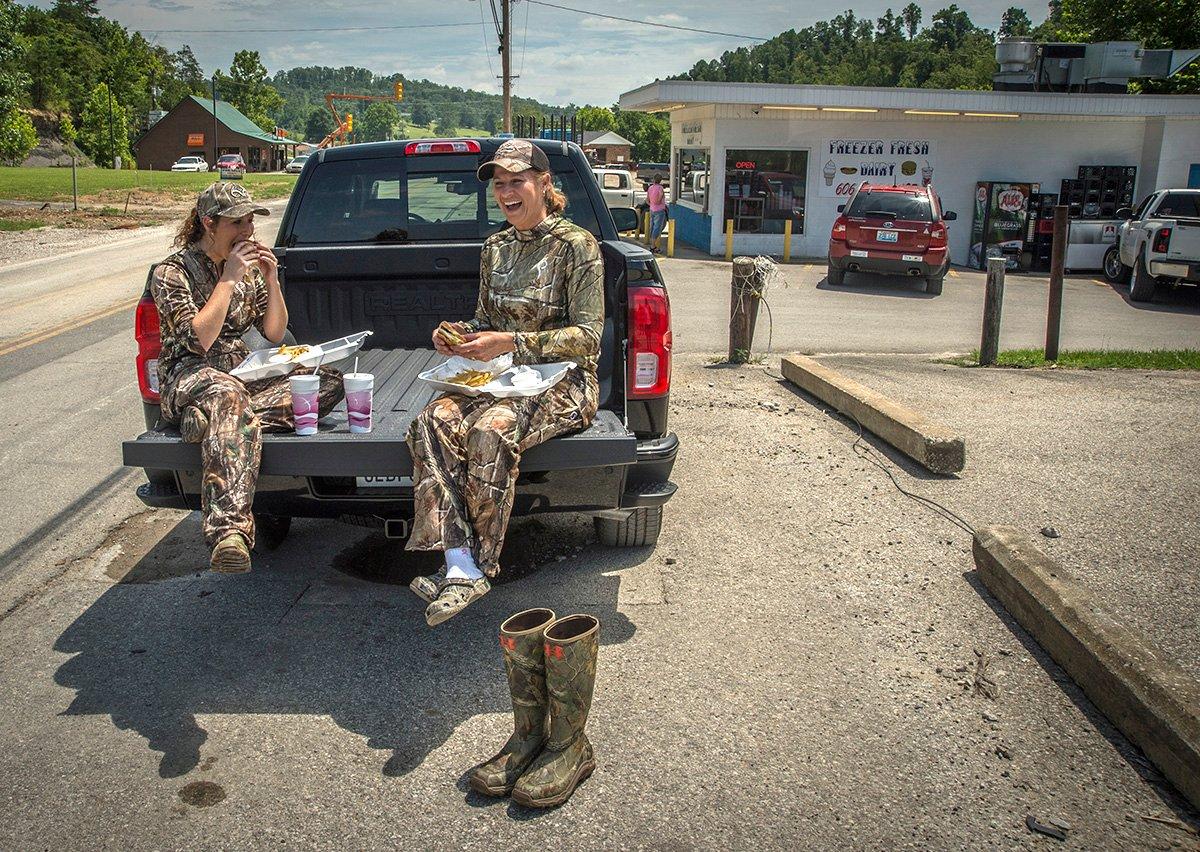Kirsten Godfrey Duke shares her tips for cramming all four subspecies into one crazy spring
Road trips, the best of them, are efforts to cover as much ground as possible in a single turkey season ‚ or a lifetime.
Some folks, this second spring of the pandemic, will still road-trip close to home, limited by state mandates. Others will hit the highway for extended stretches of time, marching to Thoreau's beat of a different drummer.
Often the motivator is taking that first grand slam. Killing an Eastern, an Osceola, a Rio Grande, and a Merriam's subspecies of wild turkey is no small feat. To do so, as the saying goes, is where the rubber meets the road.
Trip Slamming
A handful of years ago, Kirsten Godfrey Duke ‚ a social-media influencer with 21.5K followers ‚ completed her single-season grand slam on an Eastern wild turkey in her home state of Kentucky. I know and love my native birds, she said. You don't have to do it in a single season. Take chunks at a time. One big trip a year.
She did it in one spring, though. the Bluegrass State native traveled for the other subspecies and killed seven turkeys during that 2015 spring season. She's road-tripped for many more since.
We did so much driving, I did not see the same place twice.
How does she do it? I save up all my free time for hunting, Godfrey Duke said. If you want it bad enough, you will find time. First and foremost, save money. Make it like a little splurge account. Use a credit card. Make payments.
In Florida, on the Osceola leg of her single-season slam quest, she was skunked on pressured public land. Many would've given up on the dream. Not her. She returned home, then went back to the Sunshine State, determined to kill one. This time the birds she hunted, on private land, gobbled good. I had six toms walk out in front of me and shot the first one. An older Osceola, the gobbler weighed 18 pounds on the scale and had spurs going 1 1/4 inches. The beard taped 10 3/4 inches.
As serious hunters know, that's one good Florida turkey.
Pick Your Spots
An important part of taking a grand slam on the road is selecting locations that allow you to tag several subspecies if possible. Godfrey Duke chose a southwest Nebraska outfitter near Kansas and Colorado for her Rio Grande and Merriam's birds.
She used online research and hunting show contacts to put trips together. She's also got family in Florida, which helped with her Osceola hunts. Social media networking, Instagram, all that, I've met a lot of awesome people online, she said. And this put her in a position to travel out West.
Aware of this challenge, Godfrey Duke covered plenty of road-tripping ground to find and successfully take both her Merriam's and Rio Grande turkeys. We did so much driving, I did not see the same place twice. She killed her Rio an hour south of camp, in southwestern Nebraska near the Kansas line. For Merriam's she hunted elsewhere, not far from the Colorado border, but also still in the Cornhusker State.
You can find so many public lands if you do your research, Godfrey Duke said. I can't get enough of hunting. I learned enough in a short time ‚ mostly through trial and error. It's my life; I love it.
And some of the best road trips are close to home. Sharing her passion for the tradition, she even introduced her mother to turkey hunting.
Local Radar
Local, in-state road trips are surely the best way to prepare for the next step: mapping a travel plan for other states.
While Godfrey Duke had pretty much pieced together her road-trip slam on her own ‚ often hunting alone as she completed it ‚ she wanted to get her family involved. Often a parent or older mentor will teach the hunting tradition to a younger person learning it. In this case, roles were reversed.
Kirsten presented the idea of spring gobbler hunting to her mother, who first helped film some turkey hunts. They heard lots of gobbling, and her mother loved it. She just flipped out, Godfrey Duke said. Next, they chased birds together in Kentucky.
We set up a blind so turkeys could get used to it before the hunt. But I was worried the morning we went since it sounded like gobblers were further out from our spot, Kristen said. One bird kept gobbling behind us, about 200 yards away. When I called, it gobbled back. We waited. As I looked to the left, my mom nudged me: 'Is that a turkey?' She saw it first.
That's a turkey and that's a male, Godfrey Duke had whispered back. Her heart was pounding, though. With decoys staked close to the blind, the bird had come in tight. Shoot him momma! she'd said. And her mother dropped the gobbler.
My mother asked, 'Can we go see it?' I was so proud. And the fire was stoked as they returned home on those local roads.
[Read More: Six Ways for Turkey Hunting Multiple States on the Road]
What makes Realtree.com the best online resource for turkey hunters? See for yourself. We cover all things turkey right here.










